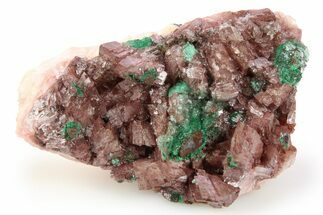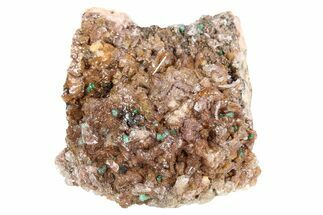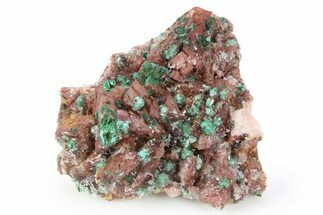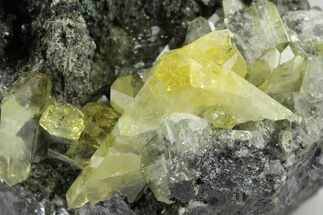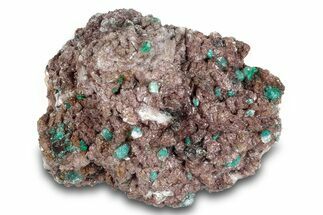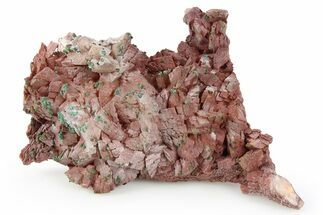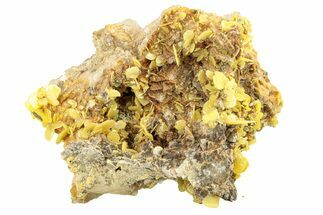This Specimen has been sold.
3.6" Rosasite, Selenite and Ferroan Dolomite Association - Morocco
This colorful specimen contains blue-green colored rosasite crystals, enshrouded in a thin layer of beautifully transparent selenite crystal. These crystals formed from a ferroan dolomite crystal matrix. Small spots of blue, likely azurite, can be found scattered across the exterior of the rock matrix. It comes with an acrylic display stand.
Rosasite is a secondary mineral that forms in oxidation zones of copper-zinc deposits, generally forming a fibrous botryoidal sphere that can appear vitreous and silky. While typically featuring a blue-green color, colorless specimens are not unheard of. The chemical formula of rosasite is CuZnCO3(OH)2.
Selenite is a variety of gypsum, a soft sulfate mineral composed of calcium sulfate dihydrate (CaSO4 · H2O). When chemically pure, gypsum is transparent and colorless, but impurities give the gypsum a diverse range of colors and formations. Desert rose selenite and satin spar are just a few of the varieties of gypsum known to have formed though hydrothermal processes.
Dolomite is an anhydrous carbonate mineral composed of calcium magnesium carbonate (CaMg(CO3)2).
The mineral dolomite crystallizes in the trigonal-rhombohedral system. It forms white, tan, gray, or pink crystals. Dolomite is a double carbonate, having an alternating structural arrangement of calcium and magnesium ions. It does not rapidly dissolve in dilute hydrochloric acid as calcite does. Crystal twinning is common.
Dolomite was first described by Carl Linnaeus in 1768, and in 1791 it was described as a rock by the French naturalist and geologist Déodat Gratet de Dolomieu. He first recognized the material in buildings of the old city of Rome, and later as samples collected in the mountains known as the Dolomite Alps of northern Italy.
The mineral dolomite crystallizes in the trigonal-rhombohedral system. It forms white, tan, gray, or pink crystals. Dolomite is a double carbonate, having an alternating structural arrangement of calcium and magnesium ions. It does not rapidly dissolve in dilute hydrochloric acid as calcite does. Crystal twinning is common.
Dolomite was first described by Carl Linnaeus in 1768, and in 1791 it was described as a rock by the French naturalist and geologist Déodat Gratet de Dolomieu. He first recognized the material in buildings of the old city of Rome, and later as samples collected in the mountains known as the Dolomite Alps of northern Italy.
SPECIES
Rosasite, Dolomite & Selenite
LOCATION
Bou Bekker, Touissit, Morocco.
SIZE
3.6 x 2.5"
CATEGORY
ITEM
#104171
 Reviews
Reviews
